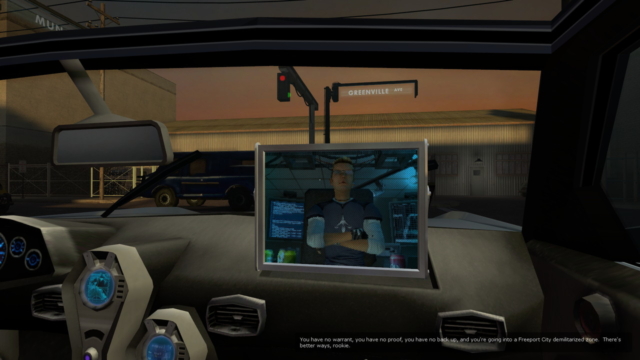
Sin Episodes: Emergence
Written by: Rik
Date posted: April 2, 2021
- Genre: Action
- Developed by: Ritual Entertainment
- Published by: Valve
- Year released: 2006
- Our score: 6
Sin was one of a number of late-90s competitors for the first person shooter crown that ultimately went to Valve’s Half-Life. The general direction of travel during this period was away from the brown dungeons of Quake and towards a single-player experience that delivered more variety in its environments, as well as some context for the action in terms of accompanying narrative.
While Sin certainly delivered in terms of trying to set the action in a recognisable world and providing a sense of visiting different places and settings, its attempts at a story retained some of the lunk-headedness of the previous FPS era, with our hero John R. Blade creating and then wading through piles of dead bodies and burning flesh in pursuit of the nefarious Elexis Sinclaire, a scantily-clad female scientist, while engaging in largely wit-free banter with tech wizkid JC over the radio.
Despite some critical acclaim upon release, it was also was notorious for glitches and bugs in an era when extensive patching was less easily achievable than it is now, and although a mission pack, Wages of Sin, followed in 1999, to a reasonable reception, Sin seemed destined to be remembered as a forgotten contender rather than a game with any serious sequel or franchise potential.
Episodes was a belated attempt at a revival, some time after its old contemporary had received a highly successful follow-up of its own. To some extent, Episodes owed its creation to this success, as Ritual used not only the Source engine that powered Half-Life 2, but also Valve’s Steam platform for release, without any further publisher support. The initial, ambitious, plan was for a total of 9 episodes, but unfortunately only the first, Emergence, ever saw release. At that stage the episodic format was in its infancy, and never quite caught on for genres other than adventures, with even Valve finding themselves caught down a cul-de-sac with their Half-Life 2 follow-ups, getting a couple out of the door, before an infamously long wait for the third.
This site’s review of Half-Life 2 has also been subject to a long and inexplicable delay, and so we aren’t really in a position to hark back to it too much, although even with only a sketchy recollection of the look and feel of HL2 to fall back on, there certainly seem to be a few parallels here. Most significantly, the Blade/JC dynamic of the first Sin is disturbed by the introduction of a prominent new female sidekick, Jessica Cannon (groan) who has a lot of screen time and acts as your guide, while the previously talkative Blade seems to have largely retreated into Gordon Freeman territory. Meanwhile, some of the action itself seems rather familiar, with the warehouse locations and masked guards of the early stages feeling as if they could be from another game. Compared to Sin, of course, it’s definitely still progress, and meeting and having conversations with other characters is handled well in-game, rather than through clunky cut scenes.
Even with a recent playthrough of the first game fresh in the memory, it’s hard to place exactly how the story here fits with its predecessor. Sin‘s basic setup was that Elexis, through her company SinTek, was undertaking some ethically dubious science experiments that turned people into big terrifying monsters, which Blade and JC worked to shut down, although somehow Elexis escaped. In the intervening years, SinTek seems to have become more powerful, and Elexis hell-bent on repeating the same or a similar plan as before.
In Emergence, there is a slightly different twist, revealed in an opening sequence that sees Elexis, accompanied by a new character called Radek, standing above Blade on an operating table, having evidently injected him with some kind of mystery substance, and establishing the potential consequences of this are a major driving force behind this particular episode. (Fans of the first game may recall that Elexis already tried to turn Blade into a mutant, and she does pop up at one point to clarify that this isn’t what she’s trying to do this time). Anyway, with Jessica’s help, you escape, and set about trying to find out what Radek and Elexis are up to.
This is a process that largely involves shooting your way through lots of faceless henchmen. There’s not a great deal on offer in terms of innovation, although there are a few points and touches worth noting. For example, you can use your weapon in melee combat to hit an opponent, or smash open a window or weapons crate, which is quite satisfying. There’s also a fairly peculiar health pack system, which involves installing capsules of blue liquid into wall-mounted dispensers, a slightly wobbly process which casts Blade in the role of a nervous butler clunking the (thankfully robust) canisters against doorframes and dropping them on the floor en route.
If you’re successful, the canister stays in the machine until it is needed, at which point your health can be topped up with precision. Alternatively, you can shoot the canisters themselves and luxuriate in the ensuing cloud of vapour, although this is much less effective in terms of the health boost you get. Exactly what this blue stuff is, I don’t know; there are also barrels of a green mutagen, contact with which causes things to get a little blurry and slow, while an on screen prompt tells you this is helpful somehow. I think it’s meant to be a bit like Max Payne’s bullet time, allowing you to shoot in real time while everyone else slows down, but the overall effect is fairly disorienting and so it’s hard to tell if there is any real advantage.
Otherwise, it’s fairly standard run and gun stuff. The initial pistol is thankfully quite effective, and accurate aiming dispatches most human enemies with a single shot. Grenades are also effective against groups, although squeamish gamers who find the sight of people writhing around having been set alight may wish to look away at various points. The initial grunts are little more than cannon fodder, with limited tactics that largely involve taking evasive action, although they can overwhelm through sheer force of numbers. While overheard radio communications may suggest that they are working together to find you, that seems mainly to be for the sake of appearances only.
Progression brings the introduction of mutants (which are, again, rather reminiscent of Half-Life) and machine gun wielding baddies, who are a bit tougher than previous human foes, but again generally hunt in packs. Your own arsenal can be upgraded in this episode with the shotgun and assault rifle, and, like the pistol, each has alternate fire and zoom aim options. The latter is particularly necessary for the assault rifle, which seems to generate significant kickback otherwise.
Emergence apparently uses an automatically adjusted difficulty setting to allow you to maintain progress, and things certainly rattle along at a good rate while retaining a healthy amount of challenge. Firefights can be good fun, with our old friend the exploding barrel and the proliferation of other bits of pieces for the Source engine to send flying creating some memorable moments. The climax, involving an assault on a SinTek skyscraper, complete with ledge-based shootouts and a rooftop finale against a helicopter, is particularly enjoyable.
However, Emergence does get repetitive at times, and you are left wondering what different ideas might have been introduced in later episodes. The story, such as it is, doesn’t give much scope for intrigue, with the teaser for future instalments seemingly promising more fights against beefy mutant bosses (which are arguably the low point of Emergence) and the promise of actually finding out what Blade was injected with and why. 9 episodes seems like it might have been a stretch.
Aesthetically, it’s aged quite well, save for some mid-00s naffness, which gives it the air of a cheap sci-fi show on Channel 5. Thankfully Elexis has located her clothing since the previous game, although the choice of wardrobe for both major female characters is arguably reflective of the baser elements of gaming culture at the time, and there’s a fairly gratuitous dream sequence that doubles down on the sexual dimension to the Elexis/Blade relationship that was a relatively small part of the original game. Meanwhile, the rather marginalised JC seems to have aged massively since previous events, and now resembles an actor in his 40s who used to play a kid genius on TV. As before, the dialogue and banter is humdrum at best, and you find yourself carried along by the action rather than by any desire to find out what happens to these characters.
It’s tough to pass judgement on what is essentially an incomplete final product, but what’s here is certainly playable enough while it lasts and does at least include a climax of sorts to give some sense of closure. It will likely be of most interest to those who played the original, although as noted the story was never Sin‘s strongest suit, and on the basis of Emergence, this sequel appears to be treading very similar ground. Still, the action is solid, successfully combining some of the more modern trimmings of a mid-00s shooter with an old-school grunt-blasting aesthetic in a way that’s altogether rather satisfying.

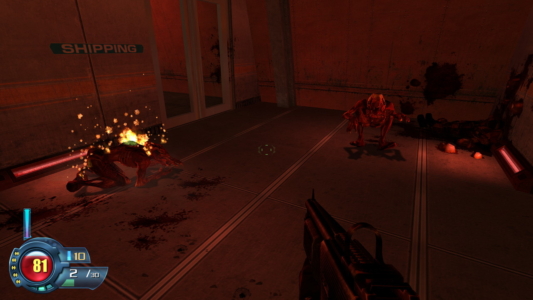
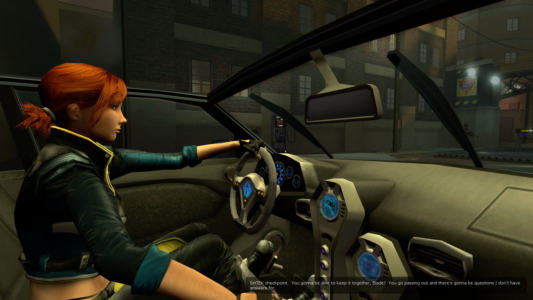
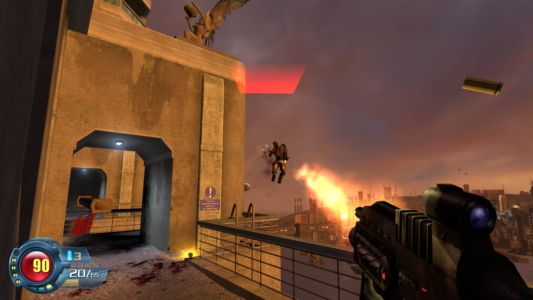
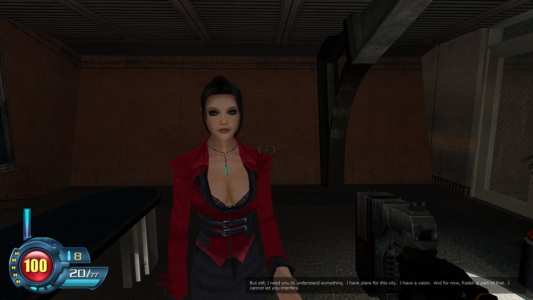

 Posts
Posts
Bad level design, bland landcapes, bad weapon feeling, no story, too short (but adequate for the episodes racket the publisher had tried to set up, I guess). DVD dumped to the garbage can right after finishing it. I can only remember one rather nice song from it, and one feeble joke if player looked one of Jessica’s assets for more than a few seconds.
If the much better original is rated only 6 (I had given it a B — but I played only the patched game on a PC far exceeding the ones available when it was published), the sequel deserves a 2 or 3 (I had given it an F, hence the garbage can).
By the way, congratulations for your 20 years. FFG is now the only gaming site I keep in my bookmarks — and I still lament about WinHTTrack not being able to create an offline copy of it. 😉
April 2, 2021 @ 9:05 pm
Congrats on the 20 years and good idea for a commemorative series of articles.
Originally this was bugged so it always used the hardest difficulty…
April 3, 2021 @ 6:08 pm
Marijn: Thank you!
Re: the bug, I did read about that, but understand that it was fixed later via Steam.
And even though I had a boxed copy from 2006, it just ended up being a code for
the latest version on Steam (plus a bonus copy of the original), so no chance for me to compare or comment.
Former Gamer: I do enjoy your description of games going straight into the bin: is this a literal or metaphorical receptacle?
April 3, 2021 @ 6:32 pm
@Rick : The literal, real one, of course. 😉 Though I keep many average or under-average games, a few ones do not have a single redeeming feature, hence the garbage can. In a few cases, it’s because of the impossibility to have the game run even with patches. My database tells me of others which suffered such a fate (here in no particular order) :
Mistmare
Racing Simulation 1 and 2
Silver
Sabre Ace
Nina agent chronicles
Soldner
Gods and Generals
Mortyr II
Vera Jones
Fear Perseus Mandate
Gun Warrior
Gladiators of Rome
Vivisector
Operation Matriarchy
Robert Anderson and the Legacy of Cthulhu
Red Shark
Soldier of Fortune : Payback
Wolfschanze II
The Stalin Subway
Ducati World Championship
Western Desperado
Painkiller Resurrection
Echelon Wind Warriors
Mob Enforcer
Revolution
Sin Emergence
April 4, 2021 @ 4:42 pm